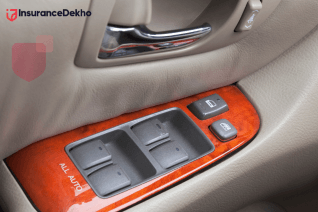Different Types of Car Insurance Plans Offered by Bharti AXA
There are various car insurance offered by Bharti AXA. Read this article to take a note of the different Types of Car Insurance Plans Offered by Bharti AXA
Table of Contents
You may already know how car insurance works, but are you aware of the many forms of car insurance? Understanding the different types of car insurance and their coverages is crucial in finding the right policy for you if you're searching for car insurance. Here are some of the most common forms of car insurance policy and how they work and what Bharti AXA covers as the company has 5200+ network garages.

Different Types of Car Insurance Plans Offered by Bharti AXA
Car insurance plans are divided into groups depending on the number of coverage policies provided and the kind of car for which insurance is requested. The plans are -
1. Liability Insurance
When your state requires you to have a car insurance policy, they generally search for liability insurance. Suppose you are involved in a car accident, and the authorities determine that it was your responsibility. In that case, liability insurance will cover the cost of repairing any property destroyed in the collision (such as cars or buildings), as well as any medical expenses incurred as a consequence of the injuries. Most states have a bare minimum for Bharti AXA liability insurance coverage that you must carry.
2. Collision Insurance
The main disadvantage of having just liability insurance is that you may find yourself unable to repair your car if you are involved in an accident. A collision insurance coverage ensures that someone else — your insurer — will pay for your car's repairs. A collision car insurance policy will pay out the value of your car if it is wrecked in an accident. While the payment would not cover the cost of a new car, it will be close to what the car mobile was worth before the accident.
3. Comprehensive Insurance
Car accidents are only covered by liability and collision car insurance plans. If anything else occurs to your car — for example, weather damage, theft, or an animal collision — you won't be able to ask your insurance carrier to fix it. However, with a comprehensive Bharati AXA insurance policy, your insurer will manage almost every scenario that arises.
You may also like to read: Benefits of Renewing Your HDFC ERGO Car Insurance Policy
4. Uninsured Motorist Protection
Just though the law requires everyone to have insurance does not guarantee how things will play out. Even if a motorist carries liability car insurance, most jurisdictions have low minimums that may not cover all of the costs associated with an accident. According to the policy, one of the worst things that may happen is that you are saddled with the expenses from an accident that was not your fault.
5. Medical/Personal Injury Protection
The expenses of treating injuries sustained in a car accident may be exorbitant. Medical and personal injury car insurance policies are available to cover these expenses. No matter who is to blame, Bharti AXA car insurance coverage will cover your medical costs as well as those of your passengers.
6. No-Fault Insurance
A no-fault car insurance policy is now offered in 12 states. This option covers injuries and property damage regardless of who is ultimately at fault in a particular accident. The choice to get no-fault insurance is influenced mainly by what alternative insurance options are available to you and at what cost. Some no-fault plans may be costly, making other alternatives more cost-effective, mainly if your car is cheap to replace.
Take Away
Car insurance is one of the most important financial protection instruments that you should have in your hands. It is unavoidable that you get sufficient insurance cover policies for your car in light of the ever-increasing frequency of accidents in the nation and the stringent restrictions imposed by the government.
Also Read: SBI General Cashless Car Insurance Process Explained
Disclaimer: This article is issued in the general public interest and meant for general information purposes only. Readers are advised not to rely on the contents of the article as conclusive in nature and should research further or consult an expert in this regard.














































